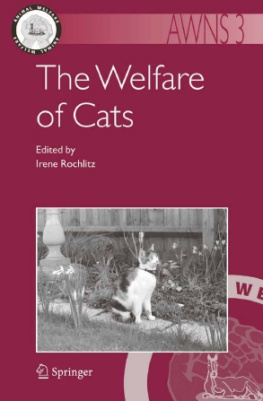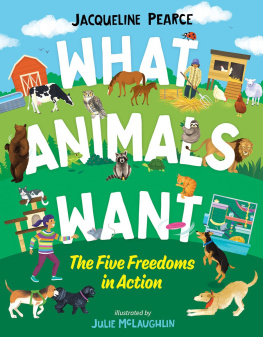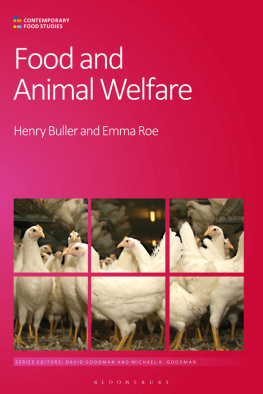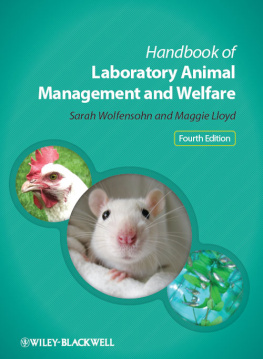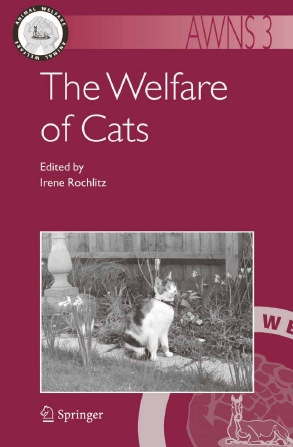A C.I.P. Catalogue record for this book is available from the Library of Congress.
P.O. Box 17, 3300 AA Dordrecht, The Netherlands.
Sold and distributed in North, Central and South Americ a by Springer , 101 Philip Drive, Norwell, MA 02061, U.S.A .
P.O. Box 322, 3300 AH Dordrecht, The Netherlands.
All Rights Reserved 2005 Springer No part of this work may be reproduced, stored in a retrieval system, or transmitted in any form or by any means, electronic, mechanical, photocopying, microfilming, recording or otherwise, without written permission from the Publisher, with the exception of any material supplied specifically for the purpose of being entered and executed on a computer system, for exclusive use by the purchaser of the work.
Printed in the Netherlands.
ANIMAL WELFARE BY SPECIES: SERIES PREFACE
Animal welfare is attracting increasing interest worldwide, but particularly from those in developed countries, who now have the knowledge and resources to be able to offer the best management systems for their farm animals, as well as potentially being able to offer plentiful resources for companion, zoo and laboratory animals. The increased attention given to farm animal welfare in the West derives largely from the fact that the relentless pursuit of financial reward and efficiency has led to the development of intensive animal production systems, that challenge the conscience of many consumers in those countries. In developing countries human survival is still a daily uncertainty, so that provision for animal welfare has to be balanced against human welfare. Welfare is usually provided for only if it supports the output of the animal, be it food, work, clothing, sport or companionship. In reality, there are resources for all if they are properly husbanded in both developing and developed countries. The inequitable division of the worlds riches creates physical and psychological poverty for humans and animals alike in all sectors of the world. Livestock are the worlds biggest land user (FAO, 2002) and the population is increasing rapidly to meet the need of an expanding human population. Populations of farm animals managed by humans are therefore increasing worldwide, and there is the tendency to allocate fewer resources to each animal.
Increased attention to welfare issues is just as evident for companion, laboratory, wild and zoo animals. Although the economics of welfare provision may be less critical than for farm animals, the key issues of provision of adequate food, water, a suitable environment, companionship and health remain as important as they are for farm animals. Of increasing
vii
SERIES PREFACE
importance is the ethical management of breeding programmes, now that genetic manipulation is more feasible, but there is less tolerance of deliberate breeding of animals with genetic abnormalities. However, the quest for producing novel genotypes has fascinated breeders for centuries, and where dog and cat breeders produced a variety of extreme forms with adverse effects on their welfare in earlier times, nowadays the quest is pursued in the laboratory, where the mouse is genetically manipulated with even more dramatic effects.
The intimate connection between animal and owner or manager that was so essential in the past is rare nowadays, having been superseded by technologically efficient production systems, where animals on farms and in laboratories are tended by fewer and fewer humans in the drive to enhance labour efficiency. In todays busy lifestyle pets too may suffer from reduced contact with humans, although their value in providing companionship, particularly for certain groups such as the elderly, is increasingly recognised. Consumers also rarely have any contact with the animals that produce their food. In this estranged, efficient world man struggles to find the moral imperatives to determine the level of welfare that he should afford to animals within his charge. Some, such as many pet owners, aim for what they believe to be the highest levels of welfare provision, while others, deliberately or through ignorance, keep animals in impoverished conditions or even dangerously close to death. Religious beliefs and directives encouraging us to care for animals have been cast aside in an act of supreme human self-confidence, stemming largely from the accelerating pace of scientific development. Instead, todays moral codes are derived as much from media reports of animal abuse and the assurances that we receive from supermarkets, that animals used for their products have not suffered in any way. The young were always exhorted to be kind to animals through exposure to fables, whose moral message was the benevolent treatment of animals. Such messages are today enlivened by the powerful images of modern technology, but essentially still alert children to the wrongs associated with animal abuse.
This series has been designed to provide academic texts discussing the provision for the welfare of the major animal species that are managed and cared for by humans. They are not detailed blueprints for the management of each species, rather they describe and consider the major welfare concerns of the species, often in relation to the wild progenitors of the managed animals. Welfare is considered in relation to the animals needs, concentrating on nutrition, behaviour, reproduction and the physical and social environment. Economic effects of animal welfare provision are also considered where relevant, and key areas requiring further research.
With the growing pace of knowledge in this new area of research, it is hoped that this series will provide a timely and much-needed set of texts for researchers, lecturers, practitioners, and students. My thanks are particularly due to the publishers for their support, and to the authors and editors for their hard work in producing the texts on time and in good order.
Clive Phillips, Series Editor Professor of Animal Welfare and Director, Centre for Animal Welfare and Ethics, School of Veterinary Science, University of Queensland, Australia.
Reference : Food and Agriculture Organisation (2002). http://www.fao.org/ag/aga/index_en.htm .
PREFACE AND ACKNOWLEDGEMENTS
The last decade has seen the publication of several books on animal welfare, companion animal behaviour and behaviour therapy, as well as the relationship between domestic animals and humans. The distinguishing characteristic of this work is that it focuses on the major issues directly affecting the welfare of domestic cats. I hope that this volume will help researchers, animal welfare organisations, cat owners and all those concerned with feline welfare to develop a better understanding of these issues, and provide some guidance as to the ways in which they can be addressed.

